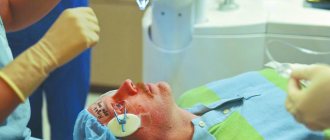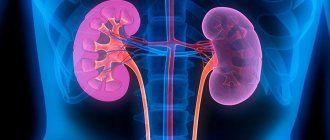Kidney transplantation is a heterotopic transplantation, which involves the transfer of a kidney to an animal or person from a donor. Heterotopic transplantation is a way to transplant a kidney to an anatomically different location that does not correspond to the normal position of the organ. For example, a liver and heart transplant is an orthotopic transplant, in which the diseased organ is removed and a donor organ is placed in its place.
Kidney transplant surgery
The original kidneys are usually not removed unless they are causing serious problems such as uncontrolled high blood pressure, frequent kidney infections, or are significantly enlarged. The artery that carries blood to the kidney and the vein that carries blood are surgically connected to an artery and vein already existing in the recipient's pelvis. The ureter, or tube that carries urine from the kidney, is connected to the bladder. Recovery in hospital usually takes 3-7 days.
What is the most terrible disease? Most people will probably say that it is cancer - since a person has two options to choose from: either die a slow and painful death, or lose the affected organ and go through all the hell of chemotherapy and radiation. And at the same time there will be no one hundred percent guarantee of complete recovery and the absence of the possibility of relapse.
But there are other diseases that are no less difficult for humans than malignant tumors. These include progressive renal failure, which ends in the inability of the kidneys to do their job.
Kidneys are vital organs. They remove waste products from the body, which begin to have a toxic effect on the body if they are not removed from the blood in time. If for some reason the kidneys have stopped performing their functions, then a person, in the absence of appropriate measures, will face inevitable death from poisoning with the products of his own metabolism.
If both kidneys fail, a person is unable to survive without regular hemodialysis (blood purification) using an artificial kidney machine. The person becomes completely dependent on this procedure and can no longer live his previous normal life.
Kidney failure also worsens your overall health - the immune system weakens and susceptibility to various infections increases. This is also facilitated by the fact that hemodialysis itself is a heavy burden on the body. As a result, the life expectancy of patients living on an artificial kidney is often short.
Fortunately, today medicine can solve the problems of such people. Quite a long time ago, kidney transplantation came into practice, returning patients to a natural and full life, although it requires following doctors’ instructions. What is this surgical procedure?
When is a kidney transplant required?
A kidney transplant is used when a person's own kidneys cannot perform their functions. This condition is called kidney failure. According to the classification accepted today, there are five stages of renal failure, and kidney failure is said to occur when the patient is at the last of them. At this stage, uremia develops - the accumulation of metabolic products in the body (such as ammonia, urea, creatinine, etc.), which have a toxic effect on all organs and systems. Without taking appropriate measures, uremia inevitably leads to rapid death.
The following pathologies can lead to the development of renal failure:
- chronic inflammatory processes in the kidneys (glomerular nephritis, pyelonephritis);
- kidney damage as a consequence of diabetes mellitus;
- congenital renal defects;
- abundant formation of cysts;
- kidney stone disease;
- traumatic kidney damage;
- oncological diseases.
Before the introduction of modern treatment methods, when uremia occurred, the patient had no chance of survival. Currently, medicine can extend the life of a person with kidney failure for many years.
Today, there are only two ways to treat patients at the fifth stage of renal failure: hemodialysis and kidney transplantation.
Kidney Transplant Center
Hemodialysis is the most commonly used method of saving life for patients whose kidneys have failed. To perform this procedure, a complex apparatus is used, which, unfortunately, cannot be made portable so that the patient can always carry it with him. To purify the blood, a person must visit a specialized medical institution - a dialysis center, to which he remains attached for the rest of his life.
With uremia, blood purification is a mandatory procedure. The patient should undergo it at least once a week. Being even one day late puts his life in danger.
In transplantation, the functions of the affected organ are taken over by a healthy kidney taken from a living donor or a corpse. This is a more effective way to solve the problem than hemodialysis, since the patient ceases to be dependent on a procedure that limits his freedom and creates a burden on the body.
According to current legislation, a kidney for transplantation can be taken from a living person who is a blood relative of the patient, or from a corpse. All other methods of obtaining material for transplantation are illegal.
A kidney transplant from a relative who voluntarily donates the organ is the most preferable option, since in this case the risk of rejection due to tissue incompatibility is minimal. When transplanting kidneys from deceased people, the main problem is finding the organs that are most compatible with the patient's tissues. For this reason, many patients wait for years for the availability of suitable material for transplantation.
It is theoretically possible to artificially grow a kidney using the patient's own stem cells. In this case, the person is both a donor and a recipient. But the practical implementation of this approach is a matter of the distant future.
Iron Dependence is Stressful
Patients have a chance
In December, the regional clinical hospital received permission to conduct kidney transplant operations. Until now, organ transplantation was available to residents of the Krasnoyarsk Territory only under federal quotas in clinics in Moscow, Novosibirsk, and Kemerovo. But the percentage of operated patients with renal failure was so small that our doctors decided to do organ transplantation themselves.
How patients will be selected for operations, who will become a donor and what problems doctors had to face when preparing the project - the chief physician of the regional clinical hospital, Egor KORCHAGIN, told us about this.
– Egor Evgenievich, how many patients in the region need organ transplantation?
– The topic of transplantology concerns those patients whose own kidneys have not been working for a long time. In the region, about 400 people are diagnosed with chronic end-stage renal failure (and their number is increasing every year), their lives are tied to hemodialysis machines, replacement therapy, which they receive 2-3 times a week. They must constantly undergo blood “purification” because their own kidneys do not function. Each time a person is confined to the dialysis site for 3–4 hours. With this therapy, many patients feel well and can even engage in business and carry out their usual activities. But they constantly have fear - God forbid, the equipment breaks down or something happens along the way. Iron dependence is a great mental stress. These people cannot afford a long business trip or a long vacation outside the locality where they are receiving assistance. But patients have little choice - either an artificial kidney or a transplant.
– But Krasnoyarsk residents could go for an organ transplant under the federal quota, say, to a Moscow clinic?
– People who need transplants still have the right to receive these operations in federal clinics. But we have one or two quotas a year. In addition, people who get this chance must travel to the city where the operations are performed and wait indefinitely for a donor to appear. It is more convenient to have the operation done in your region. But in the Krasnoyarsk Territory this topic has not been developed until today for many reasons.
In particular, there was insufficient funding. At first glance, the number of patients is small - 400 people, but the costs of treatment are very high. One transplant operation costs 1 million 200 thousand rubles. In addition, serious money must be allocated for medications that, after a kidney transplant, would prevent the body from rejecting the donor organ. When purchasing medications, we could count on federal money allocated for beneficiaries under various programs. And in order to qualify for budgetary co-financing of operations, it is necessary to prove that we know how to do them.
The issue of transplantation is being addressed quite actively in the world, and there are quite a lot of patients who today carry donor organs in their bodies. And in Russia there has long been a prejudice against the advisability of carrying out these operations.
– Today have you managed to overcome the aversion to such operations? How close are we to the point where replacing a diseased organ with a healthy one will become commonplace?
– Legal issues relating to such operations have already been resolved. In addition, a new draft federal law on transplantology is currently being considered, which involves tightening public control over organ transplantation issues and creating registers of recipients and donors. The donor base is a resource that should be rationally used not only in the city where the person died, but also in another locality (if transportation time permits). For example, we have a donor whose organs can be used for a patient in Kemerovo, and we have the opportunity to quickly deliver them there. We will, of course, take it. A kidney can remain outside the human body in a specially preserved state for up to a day.
For the Krasnoyarsk Territory, this year is the most optimal for the development of transplantology. We have enlisted the support of the Shumakov Federal Research Institute of Transplantology, our specialists have completed internships at leading institutions that deal with transplantation in Russia, Belarus and abroad, and have gained experience in surgical activity. We have already clearly developed the technology for all stages of organ transplantation.
– Who will become a donor and how will it be determined whether this person can “share” a kidney?
– Federal legislation and world practice say that the body of any person who has been declared brain dead can be recognized as a donor. In this case, a number of mandatory and sequential procedures are carried out to confirm that the brain is indeed dead. These are various tests, a collegial examination of a potential donor by a neurologist, cardiologist, and resuscitator who have at least five years of work experience. And the council gives its conclusion. Yes, this patient’s heart and lungs still work, the blood supply is functioning, and therefore the rest of the organs are in working order, but complete brain death has occurred, and there is no hope of restoring its functionality. As a rule, when declaring brain death, we are talking about the days of the patient’s life. You can continue artificial ventilation of the lungs, infusion of solutions that support the vital functions of organs and tissues, but this is a matter of time. The person will die anyway, because the brain does not supply the necessary information to the internal system. Only in this situation can we discuss the topic of donation and talk about the possibility of organ removal.
– Will the relatives of the deceased have the right to choose?
– According to the law, if a relative or the deceased himself (while still alive) has not received a written refusal to use his body for donor purposes, it is recognized as possible for transplantation. Of course, a conversation is held with the closest relatives. And, as a rule, they agree that the body of their loved one will serve the cause of saving other patients.
– Are there age or health restrictions for potential donors?
– Formally, there are no age restrictions. But the deceased must be at least an adult. In this case, not only his age is assessed, but also the presence of concomitant diseases. All tests for infectious diseases are required. The final decision to remove the kidneys is made again by a commission after careful laboratory tests. It is very important that the organs of the donor and recipient have tissue compatibility, otherwise rejection will occur.
As part of the healthcare modernization program, we purchased sophisticated laboratory equipment (it cost 60 million rubles), including powerful immunofluorescence and electron microscopes, which are in the possession of morphologists. They allow you to dynamically determine the occurrence of hints of a complication - possible organ rejection, assess the likelihood of risks and make an appropriate decision in a timely manner. An electron microscope provides a magnification of 120 thousand times, so the pathology is immediately visible.
– And the most important question: when will the first kidney transplant operation take place in Krasnoyarsk?
– Today, all legal, technological, and resource problems have been resolved. We have once again updated the register of recipients and are monitoring patients who may become potential donors. Once we determine that we have a brain-dead patient, we will select the patients most compatible with the donor from the registry and offer them surgery. If we coordinate all the issues with the relatives of the deceased, the first operation may take place this year.
How is a kidney transplant performed?
In the summer of 2021, the famous American actress and singer Selena Gomez received a kidney transplant.
The kidney is the first organ in history to be transplanted from person to person. The introduction of such operations into medical practice was preceded by a long period of experimentation on animals, which lasted from the beginning of the twentieth century. The first successful human kidney transplant was performed in 1954 by American surgeon Joseph Murray. The donor was the brother of a patient suffering from incurable kidney disease. This event is considered the beginning of the era of not only kidney transplantation, but also transplantology in general.
The successes of transplantology were directly related to advances in tissue compatibility research, the development of methods and means of suppressing the body's immune response to a transplanted organ, and the development of effective methods for preserving cadaveric organs.
Today, kidney transplantation is a very common procedure. Approximately 50% of all transplant operations are kidney transplants. The main problem in this case is the shortage of donor organs - relatives are not always ready to donate an organ to a patient, and among cadaveric organs it is difficult to find one compatible with the patient’s tissues. Therefore, the waiting list for a kidney transplant is very long.
Kidney transplantation includes two stages:
- Preparing the patient for surgery.
- The actual kidney transplant.
Preparing for a kidney transplant
The first step in preparing for surgery is to identify and eliminate problems in the patient that are contraindications to kidney transplantation. These include:
- Oncological diseases.
- Tuberculosis is in the acute stage.
- HIV infection.
- Hepatitis.
- Serious cardiovascular pathologies.
- Pathologies of the respiratory system.
- Drug addiction.
- Mental disorders.
In addition, patients with any diagnosis are denied surgery if doctors predict that they have a maximum of 2 years to live.
To exclude contraindications for transplantation in a patient, the following diagnostic methods are used:
- Analysis of urine.
- Blood test for biochemical parameters to identify abnormalities characteristic of somatic or infectious diseases.
- X-ray examination of the lungs.
- Functional diagnostics of the lungs.
- Ultrasound examination of the abdominal cavity.
- Endoscopic examination of the esophagus, stomach and duodenum.
- Electrocardiogram.
If abnormalities are detected in the ECG, the patient may be prescribed a coronary angiography examination - the injection of iodine dye through a catheter into the coronary artery, ensuring its visibility on an x-ray.
If no contraindications to transplantation are identified, then the next step is to search for donor material and check its tissue compatibility.
If a cadaveric kidney transplant is planned, the patient is put on a waiting list. While waiting for the appearance of an organ that meets tissue compatibility and some other criteria, the patient is prescribed the following procedures:
- Hemodialysis.
- Examination for the presence of pathogens of infectious diseases in the body.
- Elimination of diseases in the oral cavity.
- Otolaryngological examination.
- Gynecological examination.
- Preventive vaccination against infections.
- Treatment of chronic pathologies.
- Surgical treatment of coronary heart disease, if any.
- Removal of both kidneys (if it is impossible to stop the infectious inflammatory process in them).
During preparation for the operation, the patient needs to submit documents to the local department of the Ministry of Health in order to receive a quota for a free transplant.
The patient can be called for surgery at any time, so he must be in constant readiness for the procedure. After the call, the patient must refuse food and drink and immediately come to the medical facility.
Kidney transplantation from a living person
Organ transplantation from living donors has the following advantages over kidney transplantation from a cadaver:
- High probability of survival even in the absence of a genetic connection between the donor and recipient.
- There is no long wait for suitable material.
- Possibility of planning an operation.
- The ability to carefully examine the donor for the suitability of his kidneys for transplantation.
- Reducing the time of lack of blood supply to the transplanted organ.
In addition, with transplantation from a living donor, it is possible to perform the operation before the onset of uremia and, accordingly, the need for hemodialysis. This reduces the risk of complications.
According to Russian legislation, only a close genetic relative of the patient, no younger than eighteen and no older than sixty-five years old, can be a kidney donor, subject to his voluntary consent.
Before organ removal, the donor is carefully examined to determine whether he has pathologies in which the loss of a kidney would cause fatal consequences for the body. These include, in particular, high blood pressure. Timely detection of hidden pathological processes in the kidneys is very important. Since the donor will live the rest of his life with only one kidney, this organ must initially be absolutely healthy.
How is a kidney transplant performed?
Kidney transplantation can be performed orthotopically and heterotopically. In the first case, a healthy donor kidney is placed in place of the previously removed patient kidney. This transplant option is rarely used due to a number of its disadvantages.
In heterotopic transplantation, the organ is placed in the iliac region of the small pelvis, bringing the ureter into the bladder. This is a more common method of transplantation due to its comparative technical simplicity.
During a kidney transplant, general anesthesia is used. The operation lasts three to four hours. After transplantation, drainage tubes are placed in the surgical area and the incision is closed with sutures.
Queue for transplant
When the question arises about whether a kidney transplant is needed, the patient is transferred to dialysis - temporary maintenance of the kidney in working condition, and is included in the list for organ transplantation. The list of people in need of a transplant is usually huge, but this does not mean that a patient will receive their kidney last if they are at the bottom of the list. There are a number of indicators by which a donor kidney may be suitable for one patient and not at all recommended for another. Thus, the wait can take several days or several years. The best option for seriously ill people is a kidney transplant from a close relative, if he agrees to become a donor. The reason for this is the presence of some identical proteins in the blood, a similar Rh factor and the same antibodies. Among relatives, they are most suitable for each other. If a relative agrees to become a kidney donor for a patient, the operation is performed urgently, and the patient leaves the list of candidates for receiving a donor organ.
To get in line for a kidney transplant, you must undergo a typing procedure, in other words, take a blood test for the presence of antigens. They are compared with other antigens in donor organs in the database and thus find a donor organ that is as close as possible in blood composition, which will definitely take root in the body and will not cause rejection by the immune system. However, the body cannot fully accept the new internal organ, so those who have already received a kidney transplant take immune-suppressing drugs to avoid the process of organ rejection.
Donors can be either relatives or strangers, but most often donors are recently deceased people who were brought to the hospital. Victims of accidents, road traffic accidents, and electric shocks often receive injuries that are incompatible with life, but nevertheless their organs remain intact. If these people, during their lifetime, have ever signed a consent to the use of their organs after death, or their relatives agree to transplant their organs to people in need, then the organs are carefully cut out, placed in a special solution and “pickled” until required, after checking the indicators. No more than 1 hour should pass from the moment of death of a person from which an organ can be removed.
Prognosis after kidney transplant
As statistics show, survival after a kidney transplant directly depends on which donor organ was used: a living person or a dead one.
| Donor type | 1 year | 3 years | 5 years | 10 years | |
| Living donor | Graft survival | 95% | 88% | 80% | 57% |
| Patient survival | 98% | 95% | 90% | 64% | |
| Deceased donor | Graft survival | 90% | 79% | 67% | 41% |
| Patient survival | 95% | 88% | 81% | 61% |
Source: SRTR – Scientific Registry of Transplant Recipients
Life after a kidney transplant
After transplantation, the patient is placed in the intensive care unit for several days and his condition is carefully monitored. The transplanted organ becomes fully functional only after about a week. Until then, the patient undergoes hemodialysis.
If the outcome of the operation is favorable, the patient is discharged from the hospital after three weeks or a month.
Kidney transplantation improves the patient's quality of life. Women with kidney transplants can even become mothers. However, the risk of transplanted organ rejection is always present. Therefore, the patient must strictly follow the doctor’s instructions. Compliance with the diet plays a significant role.
The scar remains after a kidney transplant. Aesthetic factors are ignored during transplantation!
Diet after kidney transplant
To ensure the survival of the transplanted organ, the composition of the blood is important, which is significantly influenced by nutrition. Therefore, to reduce the risk of rejection, an optimal eating regimen is so important.
For people with a kidney transplant, it is best to eat small meals four to five times a day.
Diet after kidney transplantation involves excluding foods such as
- alcoholic drinks of any strength;
- instant coffee;
- strong tea;
- carbonated drinks;
- kvass;
- sour cabbage;
- pickles and canned foods;
- smoked meats;
- spices;
- sharp and salty cheeses;
- butter;
- margarine.
You should not eat foods fried in oil. They should be replaced with stewed, baked or steamed foods.
It is necessary to minimize the consumption of salt, which puts stress on the kidneys. It is also worth abstaining from sugar, since after a kidney transplant there is a high risk of diabetes.
People with a kidney transplant should have a predominantly plant-based diet. It is undesirable to eat fatty meat foods - lamb, pork, duck meat and fish with a high level of fat content. You can eat rabbit, turkey, chicken breast, lean beef and veal.
RusTransplant
The early postoperative period will begin from the moment you awaken on the operating table. Patients regain consciousness immediately after the operation is completed and the anesthesiologist extubates them, asking them to stay awake and breathe well.
The patient will feel pain in the area of the surgical intervention (right or left) and realizes that he has several tubes connected to his body: there is a urinary catheter, a CVC and drainage in the area of the wound. The patient is transferred to a bed and taken to the intensive care unit, where he will stay for a day or two.
First day in intensive care.
During the first 24 hours in intensive care, the patient is drowsy. It is optimal if the recipient immediately comes to the operation with a bandage to fix the abdominal muscles. Firstly, it prevents the formation of p/o hernias, and secondly, it will be less painful for the patient to turn. In the intensive care unit they will numb you, so if the wound hurts, you need to tell the medical staff, and not hide it and suffer
Resuscitators will monitor the patient’s cardiovascular system indicators; a monitor will be connected to measure heart rate and blood pressure, as well as oxygenation. Blood will be taken regularly to monitor the acid-base balance of the blood and electrolytes and correct them as necessary.
Your central venous catheter will give you medications. In the early stages, in addition to taking immunosuppressive therapy, antibacterial, antiviral, and gastroprotective therapy are carried out. In intensive care settings, all prescriptions are performed by a nurse, and the patient does not need to monitor the intake of medications. In addition, they will monitor the condition of the graft using ultrasound and Doppler sonography, look at the blood flow in the kidney, the condition of the tissues around it, and after the ultrasound, the suture will be ligated. The patient cannot be fed for the first day, but on the second day they will be allowed to eat porridge with a subsequent expansion of the diet
Depending on the function of the graft, doctors determine your treatment tactics. If the graft function is immediate, i.e. the transplant produces urine in sufficient quantities, reduces blood creatinine, then the patient usually recovers quickly and is transferred to the department within a day. If a patient has too much urine, and sometimes 16 liters per day, then this volume can only be replenished in intensive care, and the patient remains there for careful monitoring and replenishment of fluids and electrolytes. When diuresis—the amount of urine—becomes normal, 2-3 liters per day, the patient is transferred to the department. If the patient has delayed graft function, e.g. She temporarily does not produce urine. In this case, hemodialysis is carried out and after potassium levels are normalized, they are also transferred to the department.
With concomitant diseases of coronary artery disease, angina pectoris, atrial fibrillation, diabetes mellitus, the patient can be observed for longer than 1-2 days. If necessary, the necessary consultant doctors are called for consultation and additional treatment is prescribed.
In order to make sure that there is no bleeding in the area of the operation, the drainage is left for a day or two, first a little blood-stained liquid will separate through it, and then yellowish plasma, and then the drainage is removed after 2-3 days. The urinary catheter is left in place for 5 days so that the anastomosis connecting the transplant ureter and the patient’s bladder heals and urine does not leak past. After removal of the urinary catheter, the patient should urinate quite often, collecting no more than 100 ml in the bladder. Usually, doctors strongly recommend urinating every hour in the first week after removal of the urinary catheter, incl. and at night, so sleep at night will be interrupted.
In the department.
Activation of the patient begins on the second day, after transfer to the department, that is, the patient gets up and moves independently, pain in the area of the suture is moderate - with tension in the abdominal muscles.
From this moment on, the patient is given a list of medications taken by time and a list for monitoring blood pressure, body temperature, fluids drunk and administered intravenously, and urine excreted. If the patient is afraid of getting confused, then a nurse controls the intake of pills at the initial stage. There will be a lot of medications, don’t let this scare you, their number will gradually decrease.
Some of the drugs are antibacterial, antiviral, drugs that improve blood circulation in the kidney, drugs that correct electrolytes will be administered intravenously, others you will take according to the list, their doses will be changed by the doctor.
The main pills are immunosuppressive therapy. Every morning you will need to weigh yourself and tell the nurse your weight, temperature, blood pressure, drinks and excretion; the doctor needs this data to adjust the treatment. Also in the morning, and sometimes in the evening, you will have blood tests taken to assess the dynamics of your condition. Doctors will perform a daily ultrasound examination of the kidney transplant to determine its condition, whether surgical complications have arisen, whether blood flow has improved, or whether rejection has begun. After the ultrasound, the surgical wound will be bandaged. The sutures are removed on days 16-20; we usually use a cosmetic suture.
If the postoperative course is smooth with initial graft function, then the patient is discharged on days 16-20; if the course is with delayed function and the need for hemodialysis, then on average at 30-35 days.
In the case of complications, everything is very different, the maximum period that was in my practice was 108 days.
Source: Video conference by N.V. Shmarina “Early postoperative period after kidney transplantation”
How much does a kidney transplant cost?
Kidney transplantation is a complex operation that is one of the high-tech medical procedures. That's why it can't be cheap. However, in Russia there is the possibility of a free transfer. Each region of the country receives funds from the state budget for free operations for those who need them.
Unfortunately, the allocated funds are not enough to perform surgery on all patients. And many are faced with a choice between waiting for better times and a paid operation, the cost of which is about 20 thousand dollars. The patient must pay this amount for the procedure itself, regardless of the origin of the transplanted organ.
Where is a kidney transplant performed in Russia?
A huge number of medical centers are currently engaged in kidney transplantation in Russia. This procedure is already widespread in many cities across the country.
| Kidney transplant | |
| Kidney transplant in Samara | Kidney transplant in Israel |
Kidney transplant surgery in Moscow is available in the following centers:
- Department of Kidney Transplantation, Russian Scientific Center for Surgery named after. B.V. Petrovsky RAMS
- Research Institute of Urology and Interventional Radiology named after. ON THE. Lopatkina - branch of the Federal State Budgetary Institution "National Medical Research Center of Radiology" of the Ministry of Health of Russia
- National Medical Research Center for Transplantology and Artificial Organs named after Academician V.I. Shumakova
- Federal Medical Biophysical Center named after A.I. Burnazyan
- National Medical Research Center for Hematology
Kidney transplant in St. Petersburg:
- Military Medical Academy named after. S. M. Kirova Ministry of Defense of the Russian Federation
- Russian Scientific Center of Radiology and Surgical Technologies named after Academician A.M. Granova
- GBOU VPO im. acad. I. P. Pavlova
- St. Petersburg Research Institute of Emergency Medicine named after. I. I. Dzhanelidze
- NMITs im. V. A. Almazova
Kidney transplant in Nizhny Novgorod:
- FBUZ POMC FMBA of Russia
Oddly enough, not only metropolitan centers were included in the ranking of leading centers: Volzhsky Center for Kidney Transplantation and Dialysis:
- Volgograd Regional Uronephrological Center Volzhsky, st. named after General Karbyshev, 86
Carrying out the operation
The found donor organ for the patient must meet certain parameters, namely:
- compatibility of blood cells with the patient;
- kidney size;
- age of the kidney (the difference between the donor and the patient should not exceed 15 years);
If the organ meets all the requirements, the patient is informed about the operation. You should prepare certain documents for it: take an extract from the hospital about the latest tests and injections, and sign a consent to the operation directly at the center itself.
A day or at least several hours before surgery, the patient should not consume food or water for the transplant to be successful. Before the operation itself, there is one more follow-up examination of the patient to identify possible health problems. They measure everything: height, weight, blood pressure. The blood is checked for the presence of electrolyte disorders, and the level of hemoglobin and hematocrit in the blood should be normal. Since the operation will primarily affect the blood, if abnormalities are detected in it, hemodialysis will be performed, which will bring the indicators back to normal.
Something else to consider before surgery is anesthesia. As a rule, clinics offer several types of anesthesia - gentle or deep. Anesthesiologists often recommend a more gentle one, since it has fewer consequences, but if the patient has a high sensitivity to pain, the only option is deep anesthesia. After all necessary measures have been taken, including sanitary and technical ones, the kidney transplant operation begins.
Celebrities who have had a kidney transplant
- Lucy Davis is an English actress born in 1973. In 1995, the actress was diagnosed with kidney failure. A few years later, she needed a kidney transplant. The transplant donor was his mother, Hazel Jackson. The operation was performed in 1997 with a successful outcome. During the rehabilitation period, the actress was diagnosed with diabetes.
- Tracy Morgan is an American comedian born in 1968. He underwent a kidney transplant in 2011. The donor was his girlfriend Tanisha Hall.










